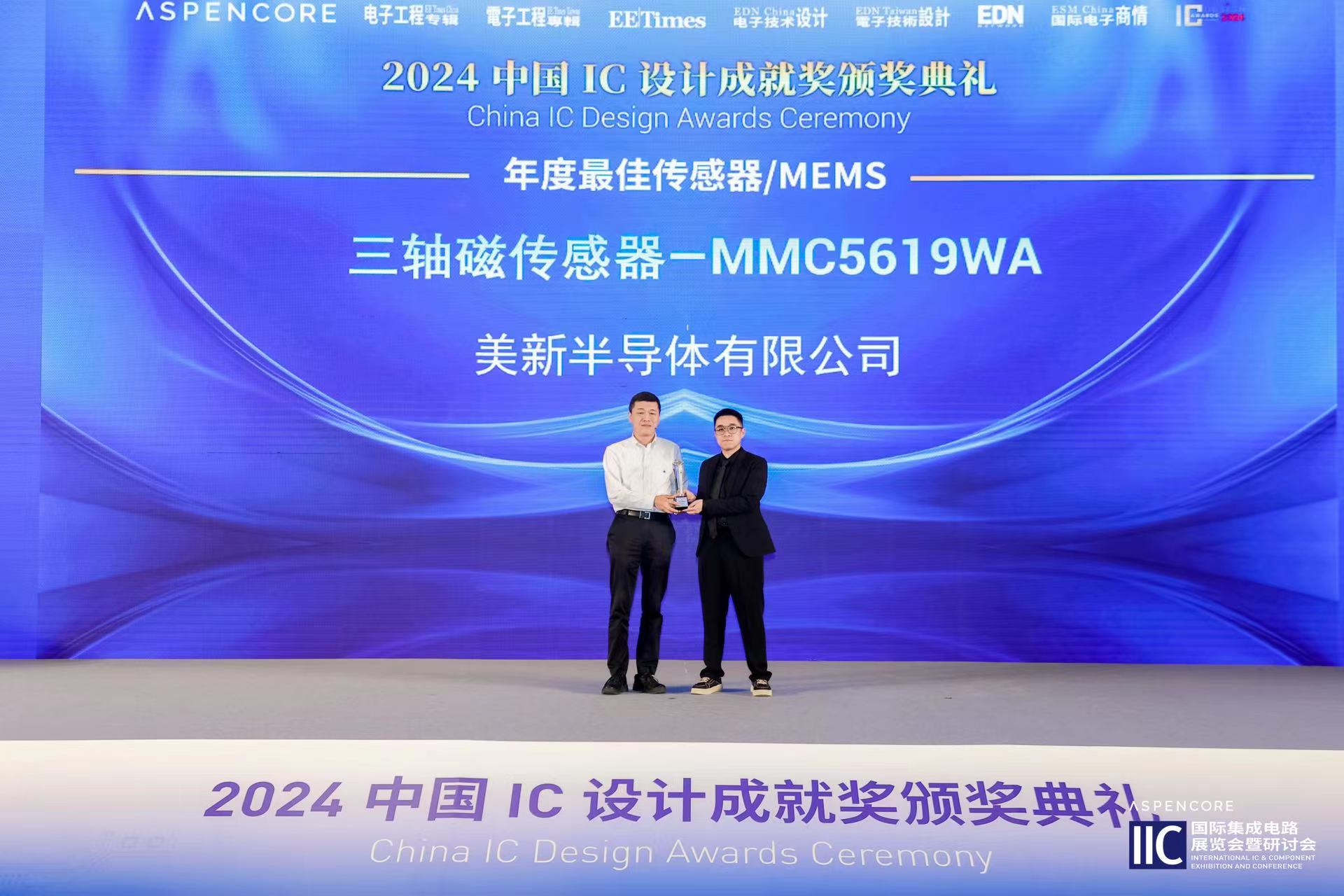AMR magnetic sensor-the choice of mainstream intelligent terminal
Release Time:2020.04.09
Magnetic sensor is a device that converts changes in the magnetic properties of sensitive elements caused by an external magnetic field into electrical signals to detect corresponding physical quantities. Magnetic sensors are mainly used to sense direction, angle, position and speed, etc., and are widely used in consumer electronics, automotive and industrial fields.
The traditional magnetic sensor uses the Hall effect to sense the strength and direction of the magnetic field. In recent years, with the gradual development and maturity of magnetic resistance technology, no matter in the consumer or automotive and industrial markets, more and more products have begun to use magnetic sensors based on magnetoresistive technology.
Principles and advantages
When some metals or semiconductors encounter an external magnetic field, the resistance value will change with the size of the external magnetic field. This phenomenon is called the magnetoresistance effect. Magnetoresistive technology mainly includes anisotropic magnetoresistance (AMR), giant magnetoresistance (GMR) and tunnel magnetoresistance (TMR).
The anisotropic magnetoresistance (AMR) effect means that when the external magnetic field is at a zero-degree angle to the direction of the internal magnetic field of the magnet, the resistance does not change with the change of the external magnetic field; but when the external magnetic field has a certain angle with the internal magnetic field of the magnet, The magnetization vector inside the magnet will shift and the resistance will decrease. The magnetic field effect of anisotropic magnetic resistance is as follows:

The basic structure of the AMR magnetic sensor is composed of four magnetoresistance Wheatstone bridges, in which the power supply is Vb, and the current flows through the resistor. When a bias magnetic field H is applied on the bridge, the magnetization directions of the two opposing resistors will turn toward the direction of the current, and the resistance of these two resistors will increase;
The magnetization directions of the two opposing resistors will rotate in the opposite direction to the current, and the resistance of the two resistors will decrease. By testing the voltage difference signals at the two output terminals of the bridge, the external magnetic field value can be obtained.

AMR magnetic sensors have the following advantages:
High frequency, low noise and high signal-to-noise ratio characteristics, performance is much higher than traditional Hall sensors;
Excellent performance, and does not change with temperature, compass application, measurement accuracy can reach 1 degree;
AMR can be integrated with CMOS or MEMS on the same silicon chip;
AMR technology requires only one layer of magnetic film, the process is simple, and the cost is low.
The world's smallest AMR magnetic sensor
MEMSIC's latest generation of magnetic sensor MMC5603NJ is a single-chip integrated three-axis magnetic sensor based on advanced AMR technology, wafer-level packaging, which is the smallest size (0.8x0.8x0.4mm) known in the world so far Magnetic sensor. A number of new technologies and new processes unique to MEMSIC are applied to the magnetic sensor MMC5603NJ.

1、Highly integrated single chip design
Early MEMS magnetic sensors required two MEMS Dies (one to sense the X/Y axis magnetic field and the other to sense the Z axis magnetic field) and an ASIC Die to process the signal. Such a design structure is complex, bulky, and costly. With the advancement of design and manufacturing process technology, Die is getting smaller and smaller, but generally requires a MEMS Die and an ASIC Die.
MEMSIC uses proprietary technology to perfectly combine MEMS technology with standard CMOS processes, directly integrates AMR magnetoresistive materials on the surface of ASIC materials, and uses a unique slope structure to sense the magnetic signal in the Z-axis direction. This highly integrated single-chip design, and the use of wafer-level packaging, cast into the industry's smallest three-axis magnetic sensor.
2、Dozens of times ahead of similar products
The most common application of magnetic sensors in electronic devices is to sense the direction of the earth's magnetic field. We call this application the eCompass. The electronic compass is susceptible to misalignment caused by various soft and/or hard magnetic fields in the surrounding environment.
MEMSIC provides mature, customizable algorithms to calibrate the direction of the software. However, when the interference magnetic field is very large, there will be obvious residual magnetism inside the magnetic induction element, and the software calibration algorithm can do nothing about it;
MMC5603NJ uses Auto Set/Reset mechanism in chip design. This mechanism is a pair of operations in the positive and negative directions on the sensitive pole of the magnetic sensing element, which can eliminate the inherent offset in the magnetic sensor and offset the drift caused by changes in time, temperature and other factors.
The temperature drift of MMC5603NJ is only ±0.01μT/℃, far lower than similar products. Therefore, MMC5603NJ can maintain consistent measurement accuracy and stable and reliable performance in a variety of harsh use environments.

In addition, MMC5603NJ also provides 20/18/16-bit selectable sensitivity, up to 1000Hz data output rate, RMS noise level as low as 0.15μT, hysteresis of only 0.02%, making fast calibration even calibration-free electronic Compass becomes possible...
Compared with the above-mentioned main performance parameters, the MMC5603NJ maintains a lead of several times or tens of times.
summary
MEMSIC has been cultivating magnetic sensing technology for many years, and has accumulated a lot in the design, manufacture and application of magnetic sensors based on AMR technology. It also pioneered the introduction of high-performance AMR magnetic sensors into the smartphone market.
As a new generation of three-axis magnetic sensors based on AMR technology, the new MMC5603NJ has been widely used in smart phones, tablet PCs and many other consumer electronic products. It is also one of the largest global shipments of magnetic sensors based on AMR technology.
To learn about the new MMC5603NJ and more product details, please send an email to info@memsic.com or call 021-62330696 (Shanghai), 0755-23984149 (Shenzhen)
About MEMSIC
MEMSIC Semiconductor is a world's leading MEMS technology solution provider. MEMSIC provides customers with one-stop solutions from MEMS sensor chips, software algorithms to application solutions. MEMSIC’s stable and mass-produced products include the globally unique thermal accelerometers, capacitive accelerometers, AMR magnetometers, low-power consumption Hall switches and more, which are widely used in automotive, industrial, medical, wearable, smart home, and consumer electronics applications, providing people with a more intelligent, reliable and safe technological experience by sensing the displacement and motion changes of the physical world. Sensing the beautiful life with MEMSIC. For more information, please visit www.memsic.com or follow us on WeChat and LinkedIn.








